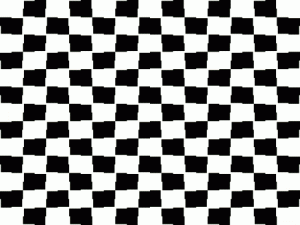Invisible moves mainly exist in the realm of possibility, as they are only very rarely executed. Basically, they are overlooked in the brainstorm phase of the decision-making process by getting filtered out on a subconscious level. Let’s have a brief look at their characteristics.
1.Quality
I am basically talking only about high-quality moves, as it is no big deal for a bad move to be disregarded. In the opening there are borderline situations where you might opt for a funny move (invisible for those who lack chess humor), just for the sake of aesthetic pleasure. You sacrifice a bit of quality, but as long as the move is playable you have the freedom to impress opponent and spectators with your originality. That said, the species I am talking about here is of the highest quality. It is about moves which are not taken into account, despite being the best choice.
2.Obscurity
Obscurity is the key feature of an invisible move. The reason why it hides so successfully in the shadows of perception is its ability to defy standard rules. It simply doesn’t tick all boxes of what we consider a healthy move. The entirety of rules and guidelines in chess is huge, so I will only give a few examples here.
Basically, we learn to deploy our pieces in a forward direction and also towards the centre. This is in line with the requirement to grab space and control central squares. Hence, a move to the edge of the board can be more easily overlooked than a centralization and a docile retreat to the first rank slips our mind rather than a penetration with our rook on the 7th rank. Combining both elements, i.e. violating two rules at the same time, such as putting a knight to a1 is even more difficult to contemplate. Another example of a complex pattern would be the de-development of a minor piece to the first rank in the opening phase, as here again two rules are broken at the same time (the geometrical rule above and the general need for urgency regarding the development in the opening phase). The most common form of invisible moves affects the rule of material preservation. Hence, we tend to overlook moves which imply leaving pieces hanging or putting pieces on well protected squares.

Never fully trust your perception: Files and ranks are parallels.
3. Beauty
While beauty is relative to some degree, we can classify invisible moves as beautiful from an objective point of view, as the marriage of quality and obscurity produces beautiful children by default. First, obscurity (or abnormality, resulting in obscurity) creates a high degree of tension through the generation of paradox. Then, quality (or rather the perception of it) resolves this tension again, which leads to the sensation of aesthetic pleasure.
4. Relevance
Some players fool themselves with the notion that they lost a specific game due to one single oversight. In reality, chess is extremely complicated. Many lower-class amateurs commit mistakes every third or second move. The majority of these mistakes are banal in nature. However, the higher you go in playing level, the higher the percentage of oversights based on invisible moves becomes. Consequently, a player with say 2100 or higher might profit quite a lot by becoming aware of the large number of invisible moves (detecting the problem) and by studying their specifics (solving the problem).
In the next post I will be presenting a fantastic example of an invisible move. It deals with a theoretical position where in 32 games only one single player was able to see the best move, simple because it came along so well camouflaged.
